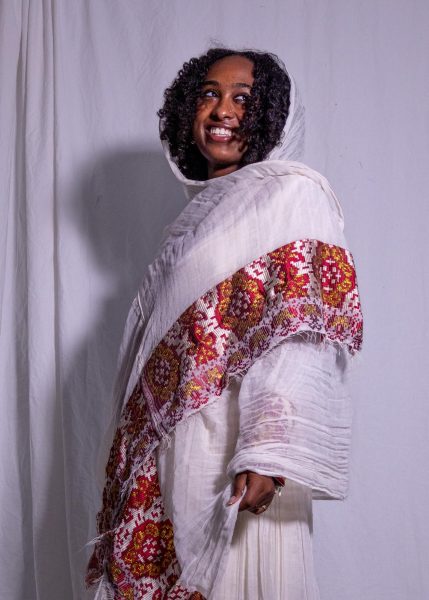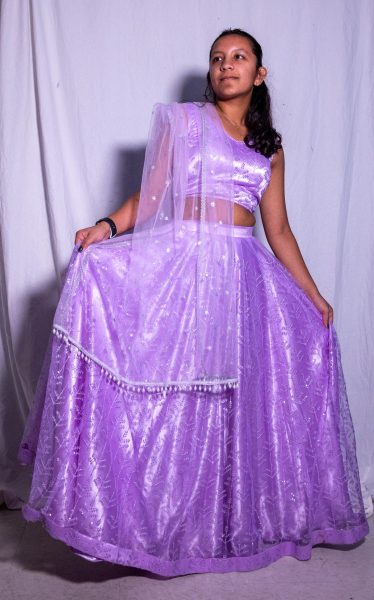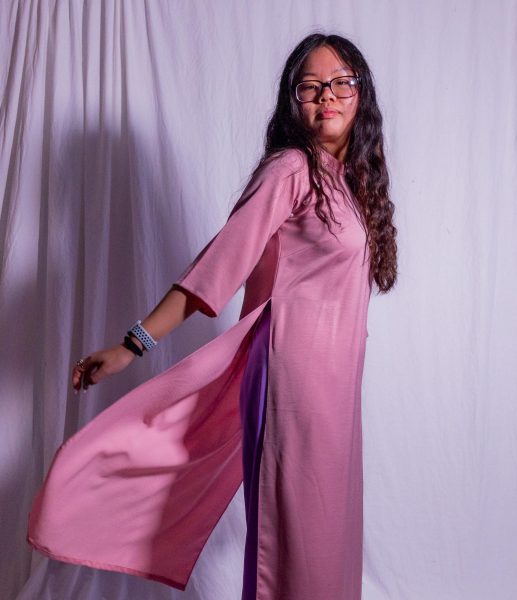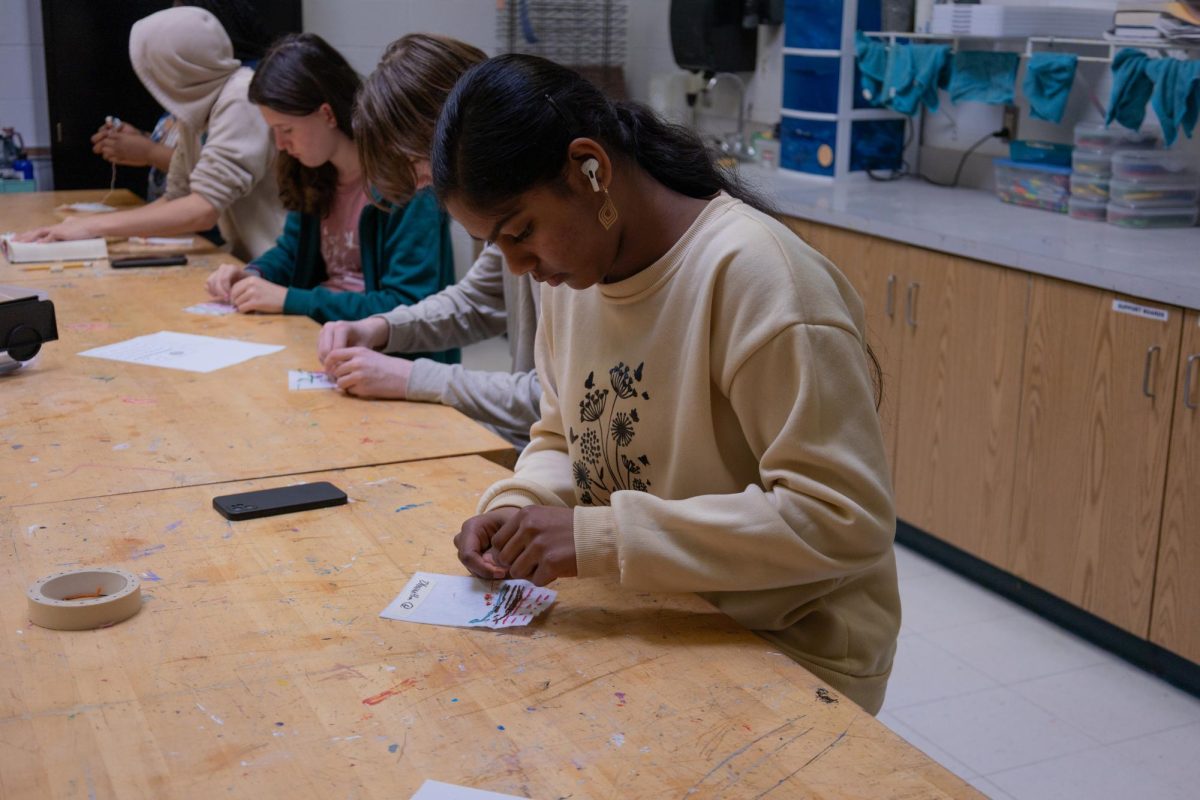Perhaps an underrated art medium, clothing — especially that of traditional wear — can represent the history, religion and social values of a culture. The hundreds of thousands of unique articles of clothing from different parts of the world speak stories of withstanding war, colonization, and socioeconomic ideals. Both clothing and beauty standards emulate different aspects of history: for the ability of tradition to last through generations of people is a form of resilience in itself.
Nuwelin Dagne : Ethiopia

Junior Nuwelin Dagne was born in the Oromo region of Ethiopia, a country located on the horn of Africa. Though she moved to the United States at the young age of two, she has visited her home country multiple times. Within those visits from a Western culture to an African one, Dagne has noted various differences not just in everyday wear, but societal structure as well.
“It’s very collectivist, not like America. Like, we don’t really lose touch with people, and if we do, we go back,” Dagne said.
“I do think it’s different for females [in Ethiopia]. I had to dress modestly, and I couldn’t really wear shorts or ripped jeans.”
Dagne credits Ethiopia’s emphasis on modesty on religious ideals, as the country has a large population of Orthodox Christians as well as a large Muslim community. The traditional dress for females in Ethiopia is a Habesha kemis: a long, thin white gown decorated with colorful embroidery. Its breathable material makes for practical use as well, as it can assist Ethiopian women with increasing airflow in hot, dry weather. Not only that, but the scarf head covering that is typically worn with the dress has been used across generations of women as a sling to carry children around.
“Women will use the head covering to carry their babies. They’ll wrap the baby on their back with it,” Dagne said. “ I love it over there. Of course it’s not 100 percent perfect, no country is, but the culture is very kind and loving.”
Sivani Kandel : Nepal

Originating from the south east asian country of Nepal, sophomore Sivani Kandel is undoubtedly in touch with her culture, having experienced going there numerous times to visit family and reconnect with her roots. Despite the country being thousands of miles away, Kandel believes the style there to be fairly similar to America.
“I honestly feel like there is a lot more American cultural influence in Nepal, too. People are more likely to wear American styles, like pajamas everywhere, and even if they’re wearing Nepali clothes, it’s something simple,” Kandel said.
However, when it comes to makeup, Kandel finds there to be a stark contrast in the way women present themselves overseas.
“People like less makeup, especially at school. You’re not allowed to wear makeup, or have long fingernails or anything like that. [Nepalis] believe that school is just a place to learn, not to do anything else,” Kandel said.
The moderation of female beauty in Nepalese schools has placed a greater emphasis on natural beauty, although outside of schools women tend to be a bit more experimental in their everyday look, sporting American streetwear and facial piercings.
As Nepal borders both China and India, its people’s traditional wear has a lot to do with spiritual beliefs and ethnic traditions stemming from centuries of dynasty control. Kandel’s cultural attributes are the Lehenga and the Sari.
“The lehenga can be a one-piece or two-piece, but it’s typically a dress with a shoulder. The sari is like an underskirt and a scarf you wrap around your shoulder,” Kandel said. “Men wear a Kurta, baggy pants and a tunic that goes down to your knees, along with the traditional Nepali hat called a Topi.”
The Nepalese traditional wear of the lehenga, sari, and kurta, are also present among various countries in the Asian region such as India, Bangladesh, and Sri Lanka — more evidence of the countries having influenced each other over the years.
Katie Huynh: Vietnam

Vietnam’s culture is a particularly interesting one, as the country had to endure years of imperialistic colonial rule up until finally declaring its independence on Sept. 2, 1945. Multiple Chinese dynasties had conquered the country for hundreds of years, with France following afterward. Vietnam had become a part of France’s colonies, such as Indochina, which grouped multiple present-day countries into one. Flash forward to World War II, in which Japan replaced French rule for a few years until Vietnam ultimately became recognized as a singular nation.
Due to its long history of colonization, Vietnam’s culture today has many marks of influence from many parts of the world. Junior Katie Huynh credits Chinese rule as a particularly influential one on the country’s development fashion-wise.
“I’d say Vietnamese dressing definitely has influence from China, because from the beginning, it was colonized. A lot of their culture is derived from China,” Huynh said.
The traditional dress for Vietnamese people, the áo dài, is a silky tunic usually worn with pants by both men and women. Huynh remarked the clothes are usually worn to special occasions like weddings and holidays.
“The [áo dài] is kind of similar to the Chinese Qipao. It’s a long dress, and you have pants that go underneath it,” Huynh said. “One of the most common things you would see on a Vietnamese person, regardless if they’re from overseas or in the country, is the wearing of jade jewelry. We wear jade Buddha necklaces or jade bracelets — I think that’s one of the more traditional pieces of clothing that have really withstood time,” Huynh said.
On the other hand, it appears Vietnamese beauty standards have evolved greatly over the past years.
“I think beauty in American culture is drastically different. Here in America, our society likes to put an emphasis on tan skin, a curvy body, at least for women. In Vietnam, colorism is a prevalent issue: people like to stay pale and stay skinnier and whatnot,” Huynh said. “[Vietnam] takes a lot of inspiration from Korean trends since the countries are so close to each other, so that’s what the youth’s fashion is looking like right now. It does have a bit of American influence, like Black culture, so it’s different from the older generations.”






